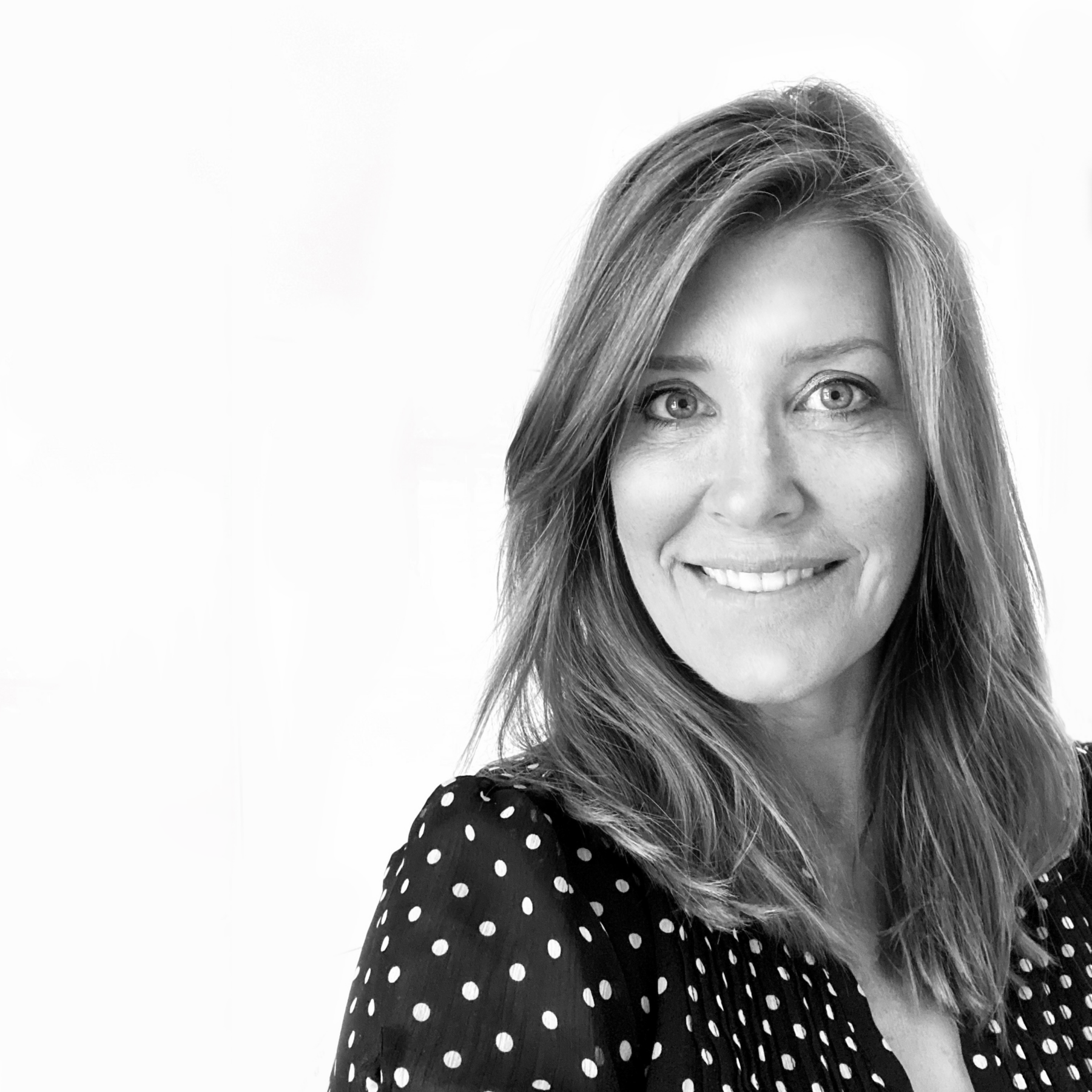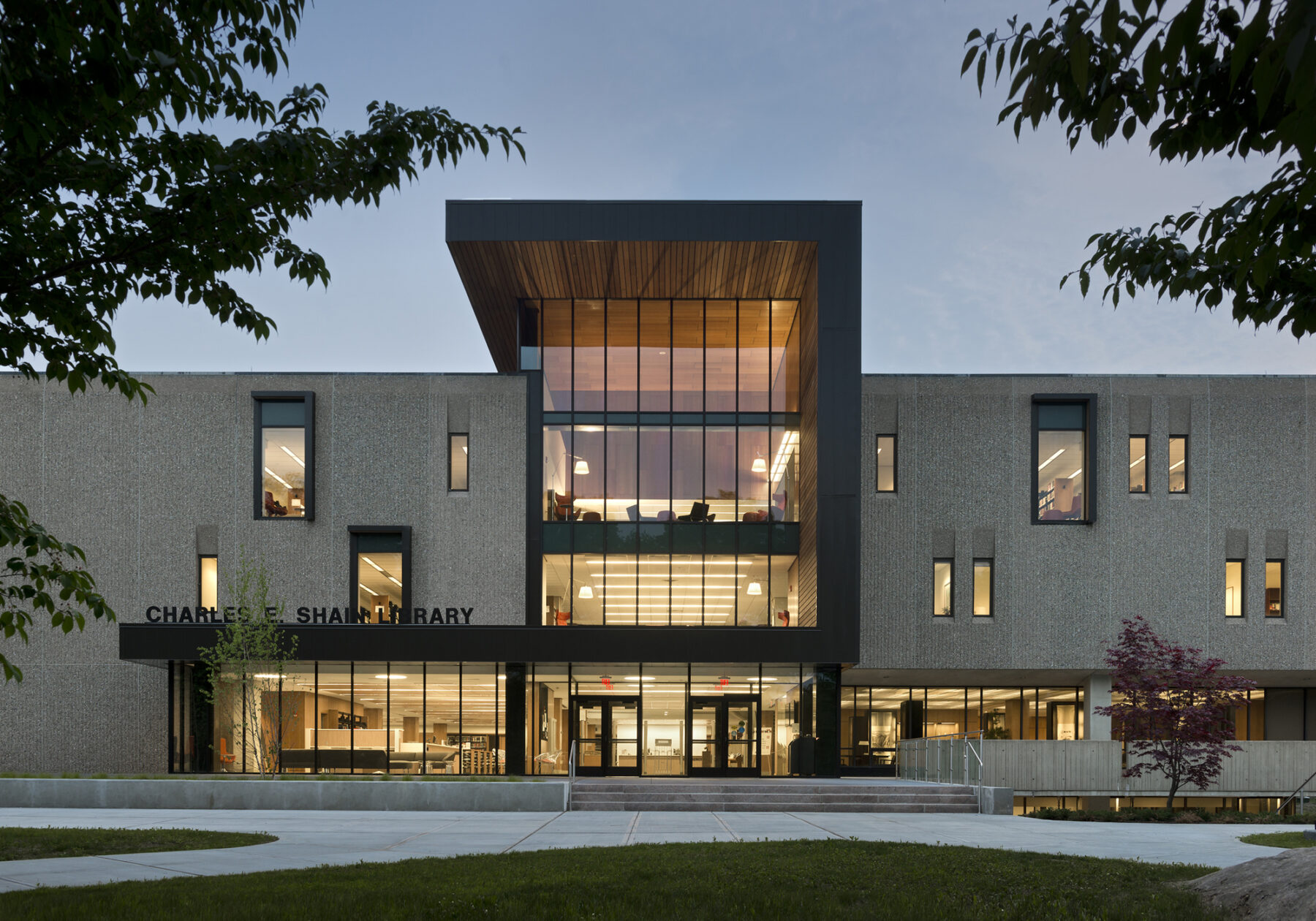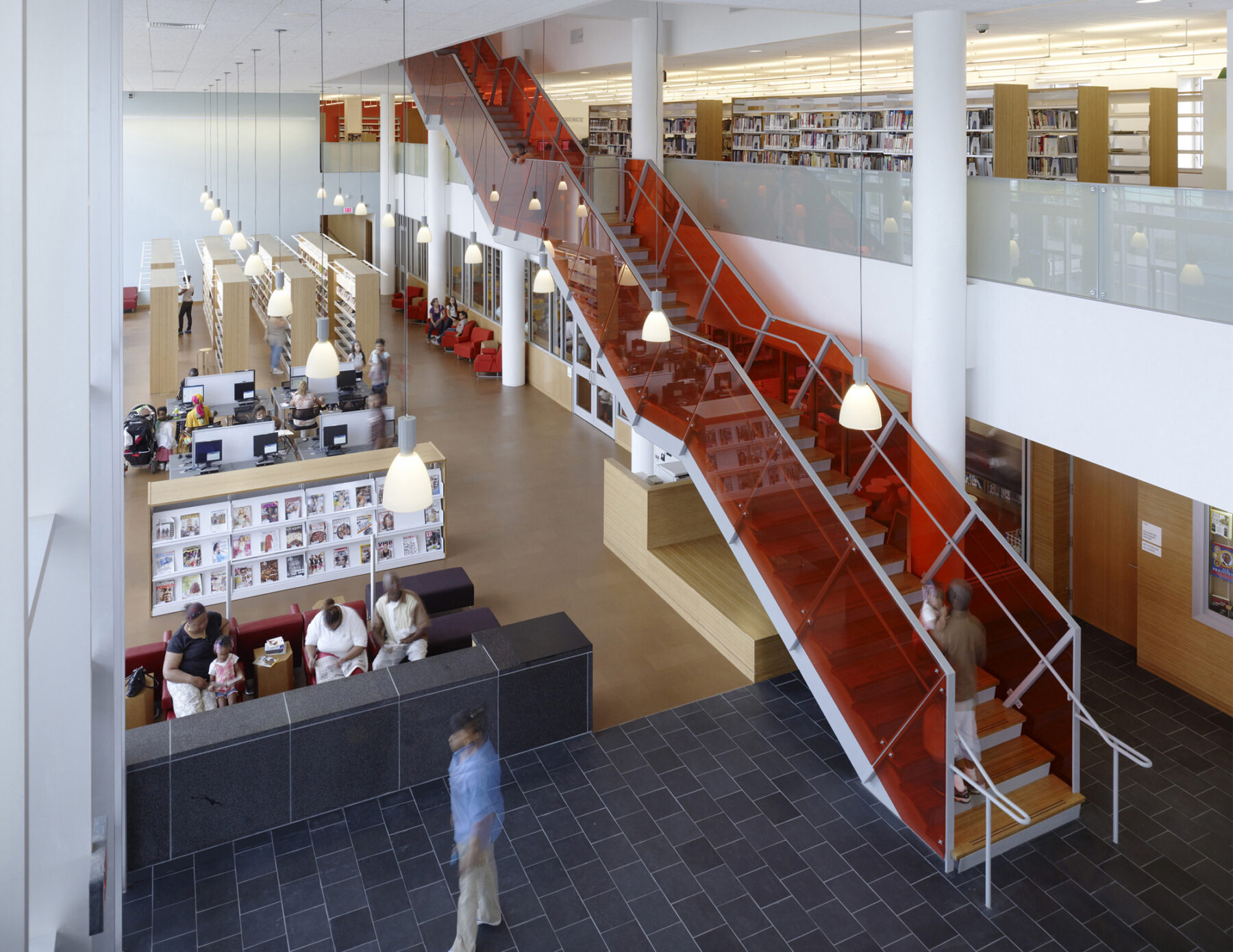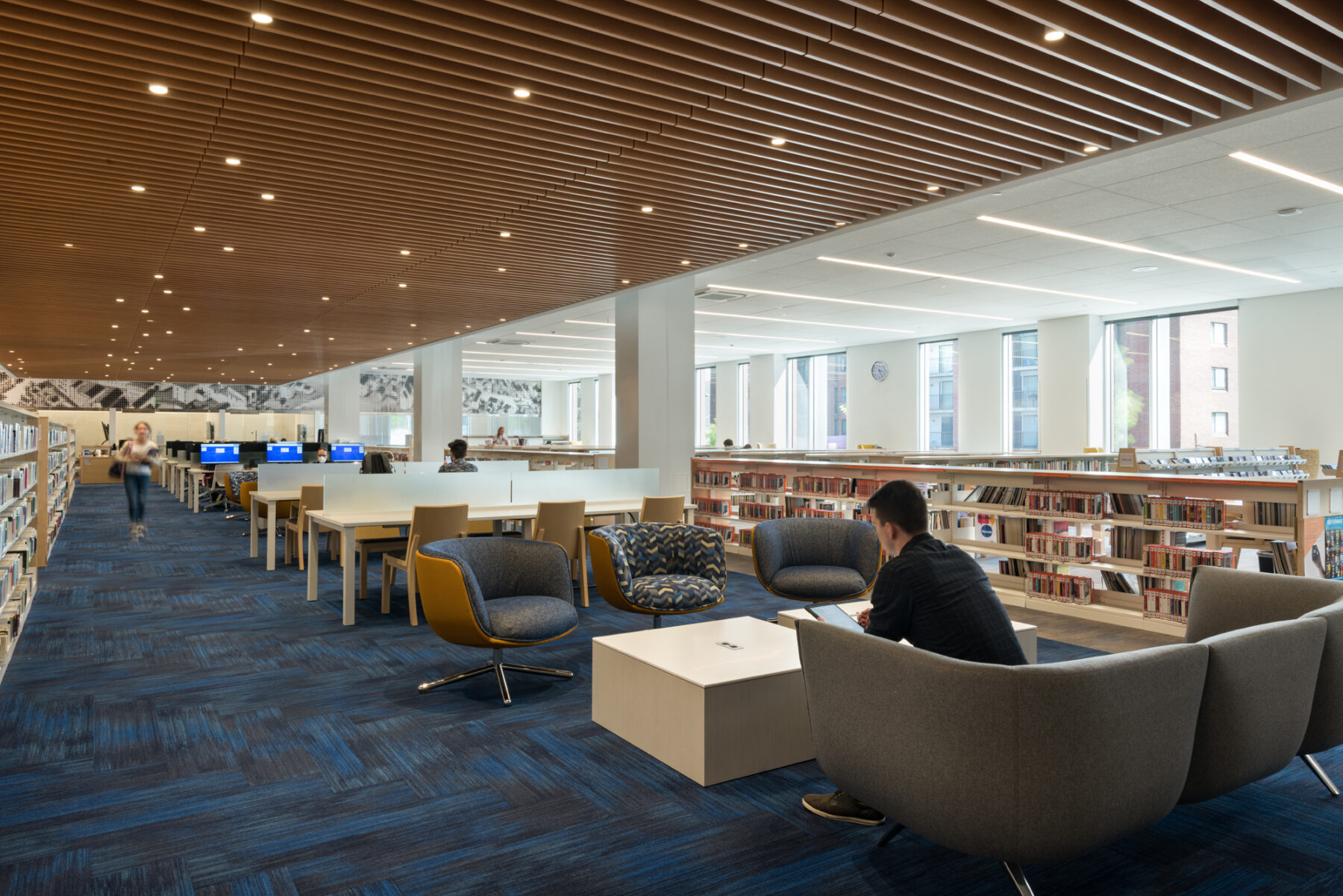Angela Ward Hyatt FAIA

President, Schwartz/Silver Architects
Degree(s):
BArch, Iowa State University
MArch, Harvard University
Professional interests:
Library design, renovations/adaptive reuse of existing buildings, Brutalism, working with volunteer committees in the early stages of design, interior architecture, selecting furniture and finishes
When did you first become interested in architecture as a possible career?
I have known I wanted to be an architect since I was in third grade. I loved to draw, make house models out of manila folders, design my dream house, and try to figure out the floor plans of my favorite sitcoms. Then, incredibly, when I was in eighth grade, my science teacher, who was on the local public library building committee and knew I wanted to be an architect, asked me to help his committee adapt a simple prefab building to library use. Fifty years later, the building is still standing! I drive by it every time I go back to my hometown of Norway, Iowa (population 468).
Who or what deserves credit for your success?
I feel so fortunate to have spent almost 30 years now in a firm that is truly collaborative at its core. Warren Schwartz FAIA, Robert Silver FAIA, and Bob Miklos FAIA, the firm leaders for my formative years at Schwarz/Silver, gave me a seat at the table on day one. They not only encouraged me but also expected me to contribute my ideas to them both in the office and in front of clients. Without their support, it would have taken me much longer to achieve some of the success I have enjoyed.
But my father, who was an engineer and also a talented artist, probably deserves the most credit. He always told me that I could do whatever I wanted, and it never occurred to me to doubt him.
What is your favorite Boston-area building or structure?
There are so many! I’m a huge fan of Brutalism, so Boston City Hall and [Paul] Rudolph’s Government Service Center are on the top of my list. But I also adore being transported in time by the original Isabella Stewart Gardner Museum and the Boston Athenaeum. And KPMB’s Center for Computing & Data Sciences (aka the “Jenga Tower”) for BU is so beautifully detailed and a striking addition to the city’s skyline. But perhaps my favorite space is not a building at all: it’s Mount Auburn Cemetery. That’s my idea of perfection.

What has been your most proud moment as an architect/designer?
It has to be the renovation of the Shain Library at Connecticut College. The 1976 late-Brutalist building had so many structural and planning challenges, and our budget was incredibly tight, but we managed to completely transform the library for only $64/sf. The project received six design awards, including a library interior design award for outstanding historical renovation from the American Library Association/International Interior Design Association. That was a proud moment because our little $6.4M renovation was recognized alongside international projects with budgets over 10 times the size.
What do you hope to contribute from your work?
Most of my projects are libraries or other community-focused buildings that are not only used by a large cross-section of people but also expected to have a certain amount of permanence. The goal is that these projects become anchors in their communities. Ultimately, I hope that my work ages gracefully and imprints on people who use the spaces.
What are some changes that you have implemented in your firm (or for yourself) to address issues of equity in your profession?
I was one of the first women in my firm to have a child and return to work after maternity leave. I was still a junior architect when I had my first son and was incredibly grateful that I—and others who followed—were given a great deal of flexibility in our schedules as we tried to navigate the new normal. This was over 25 years ago, before working from home was ubiquitous. Now, of course, flextime is the norm, but I believe we must continue to find ways to make sure parents, especially new mothers, are supported by their firms so that they can stay in the workforce if they choose and not lose precious ground advancing their careers.

Tell us about your path to architecture and how it has impacted your career.
I grew up in rural Iowa and graduated in a class of 28. Since coming to Massachusetts for grad school 30 years ago, I’ve tapped into my small-town upbringing over and over again when working with communities, most of which are participating in a design process for the first time. After graduating from Harvard in 1994, I accepted a job at Schwartz/Silver. As someone who likes to take on change, it’s a bit incongruous that I’ve spent practically my entire professional career in one firm, starting as an intern and ultimately becoming president of my firm last year. While some find great success in moving between firms, my path has given me a stable and nurturing platform to grow as an architect.
What do you see as the largest barrier to a zero-waste building, city, and world?
I’m frustrated when I see a building that has fallen into disrepair—usually as a victim of “benign neglect” —demolished rather than adapted for reuse. The embedded carbon of these buildings is our collective responsibility. As architects, we must create architecture that is resilient to inevitable change, easy to maintain, and resistant to the elements, and that ages gracefully with time.
What would you like to see change about Boston’s built environment?
I’d like to see more public awareness—even outrage—to protect, invest in, and preserve older buildings and adapt them for new uses. I’d like to see more resources for homeowners to maintain their older homes. I live in Roxbury, and many people in my neighborhood cannot keep up with their massive, aging homes. If we want to protect not only the distinctive architectural fabric of our neighborhoods but also the people who live there, we need to do better.


